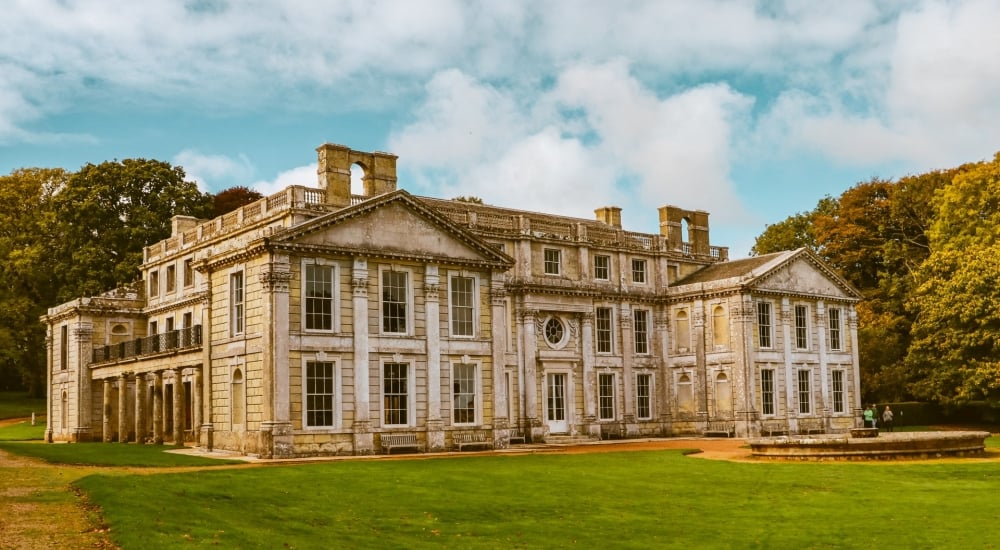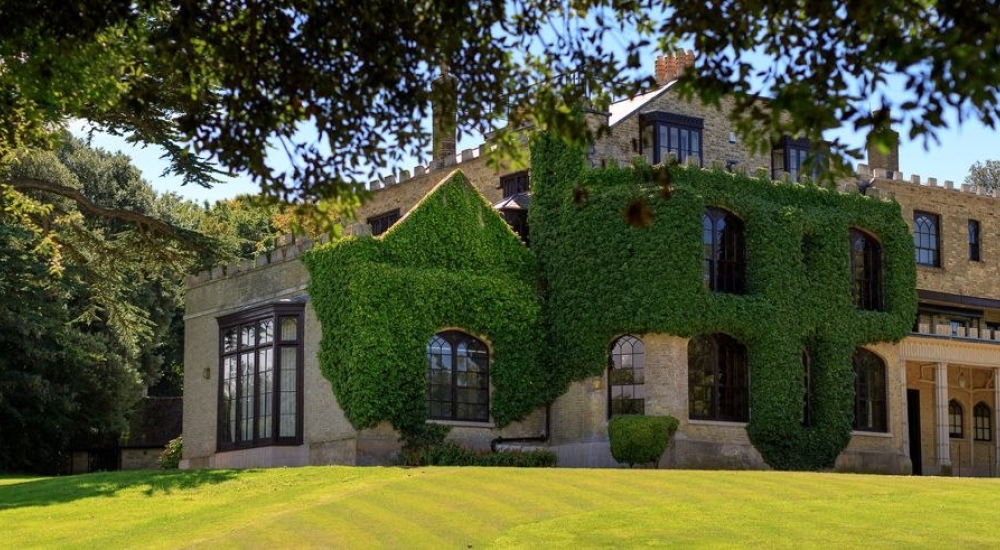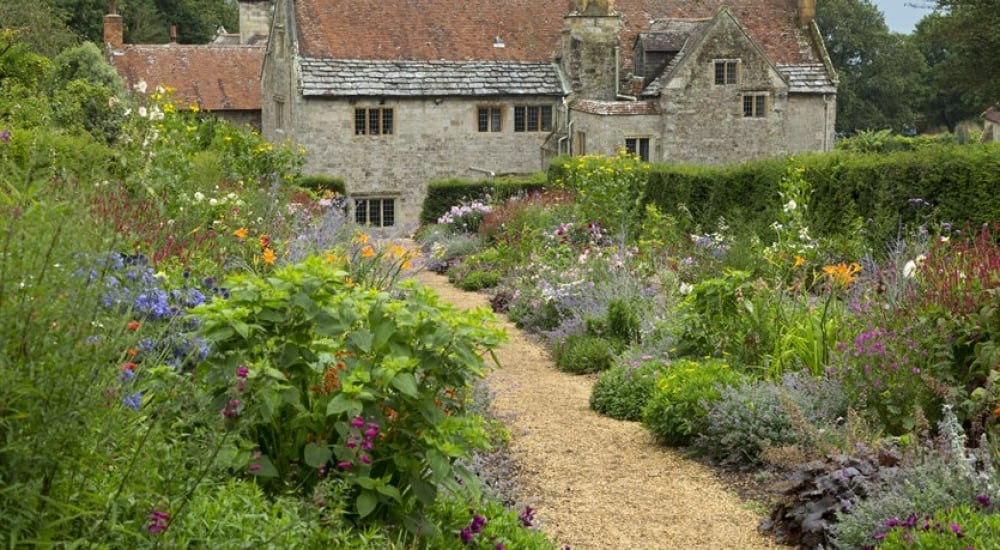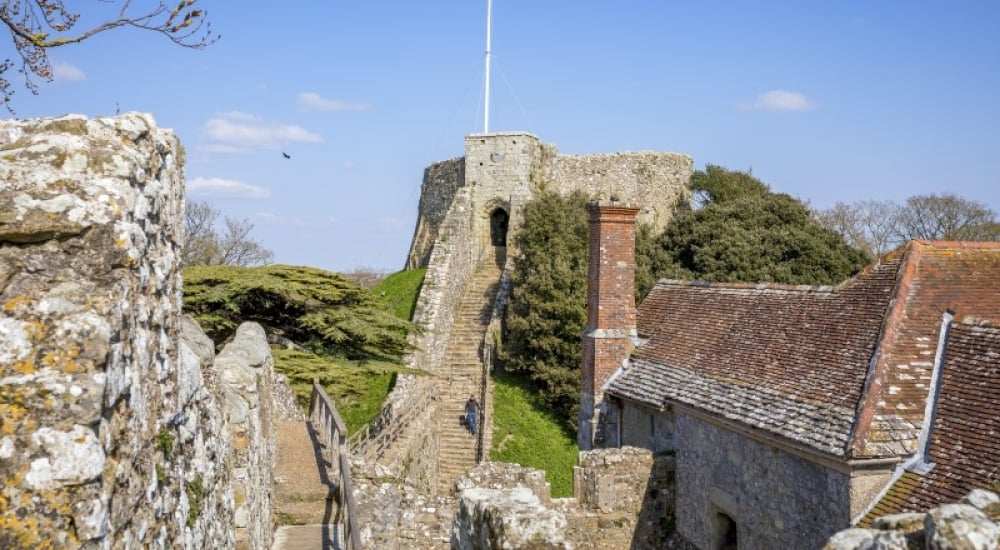Historic Island Homes
From ancient manors and royal residences to towering castles and grand estates, you’ll find a plethora of grade listed buildings and historic homes to discover on the Isle of Wight.
Osborne
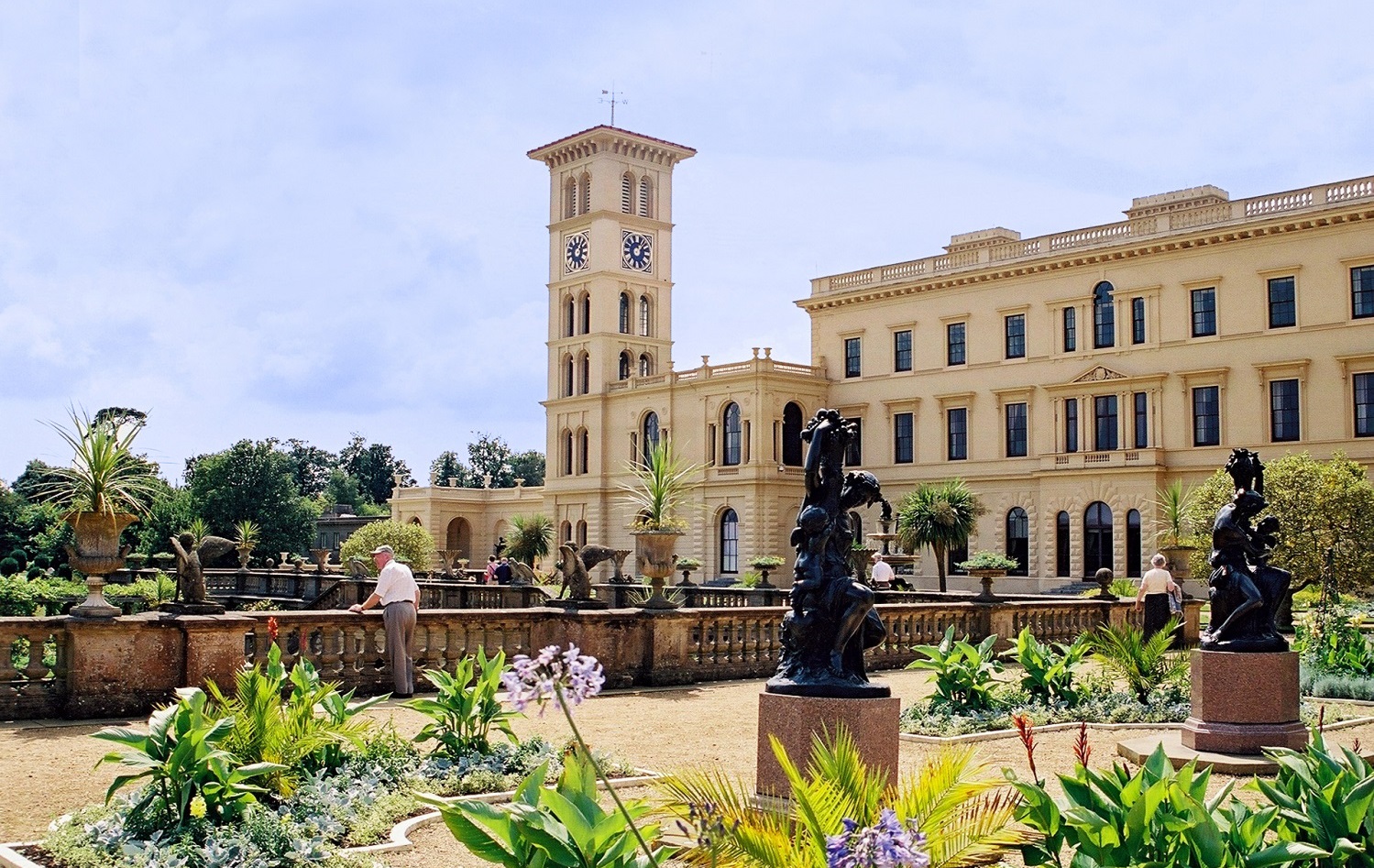
Osborne Estate was acquired by Queen Victoria and Prince Albert in 1845 and transformed into the elegant Italianate palace we see today by London Architect Thomas Cubitt - the design heavily influenced by Prince Albert.
Situated atop a hill, the grand house looks across Mediterranean terraced gardens, sweeping lawns and down towards Osborne Bay, offering a spectacular view which reminded Prince Albert of Naples in Italy.
Osborne became Victoria and Albert’s private residence, a place they could live and build a home away from court life. The couple and their nine children returned to Osborne every summer, their seaside retreat, and the Queen continued to frequent the estate for 50 years.
Within the grounds, the Swiss Cottage was built for the royal children to enjoy, complete with their own miniature kitchen and gardens where they learned to cook and grow vegetables – with Albert purchasing the best produce grown by the children for use in the main kitchen, teaching them the art and value of hard work and commerce.
At Osborne the children had the opportunity to explore the woodland, learn about wildlife, and learn to swim at their private beach, Osborne Bay. Prince Albert was keen to teach his brood useful life skills and for them to enjoy a childhood away from royal duty.
When at Osborne, Queen Victoria enjoyed time painting, writing poetry, swimming, and riding in the sweeping grounds of the estate, famously stating “it is impossible to imagine a prettier spot” of Osborne.
Prince Albert sadly passed in 1861 and Queen Victoria lived between Osborne and Balmoral, wearing black until the day she died in her bedroom at Osborne in 1901, surrounded by her children and grandchildren.
Both Victoria and Albert’s bedrooms were closed to the public for over 50 years, but today both these rooms, are open to visitors along with royal entertaining spaces, the grounds of the house, the beach and Swiss Cottage.
Farringford Estate
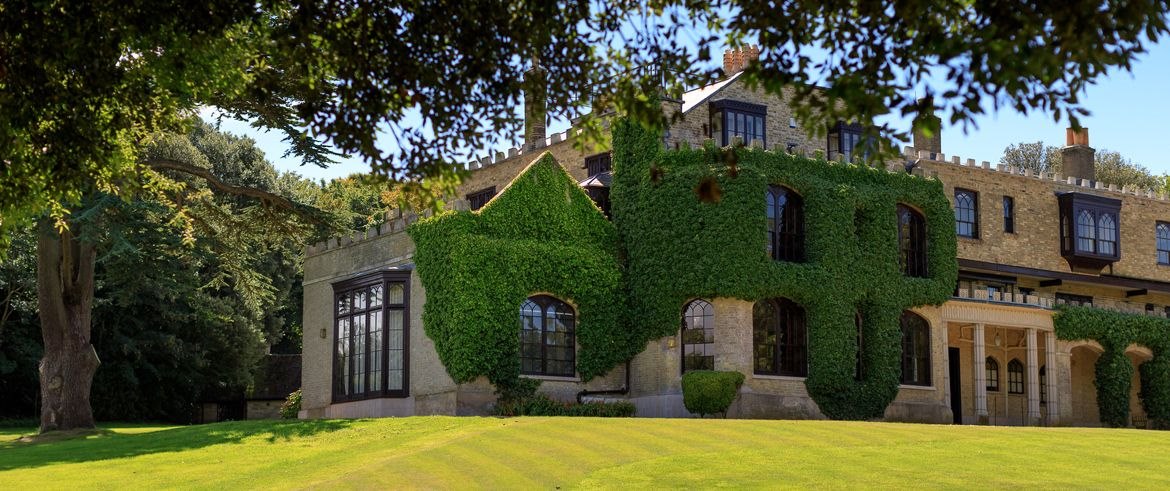
Located west of Freshwater Bay, Farringford Estate is a Grade I listed building and once home to prolific British poet Alfred, Lord Tennyson. Tennyson lived with his family and created poetry at Farringford from 1856 until he died in 1892, the estate remaining in the Tennyson family until 1945 when it was sold as a grand hotel.
The house itself is a large country villa surrounded by pretty gardens and sweeping pastureland. Farringford is a building of Georgian design with added detail in a gothic style, making it a hybrid of two popular aesthetics at the time. A unique style of building on the Island, not much has changed at Farringford since it was built in the 18th century bar extensions – the main house remains largely untouched.
Alfred and his wife Emily selected Farringford and the Isle of Wight as the place to raise their two sons, thanks to its tranquillity and beauty. The couple's second son was born at Farringford in 1854, while Alfred waited patiently watching the stars from the window in the School Room below. Both children grew up running the rambling corridors of the grand house, having many adventures with friends while Tennyson worked on his poetry in a study described as “far-off” and separating him from their boisterous play by many winding passages.
The Tennysons were keen gardeners, with Alfred mowing the rolling lawns and tending to the flower beds himself. He refused to cut back the huge trees around the estate as they provided him with seclusion. He was a poet of the landscape, inspired by great views and the setting around him. Tennyson wrote many of his works from Farringford, with some referencing the cedar tree and white-flowered yuccas in his “careless ordered” garden.
Alfred, Lord Tennyson was a loving and active father to his two children, playing games of football and badminton, building forts, flower picking and fossil hunting while here on the Island. Farringford was a true family home where they could learn, play and relax together. Working as his secretary, Tennyson’s wife Emily unfortunately suffered a mental and physical breakdown due to the stress of the role, a role that was then picked up by their eldest son Hallam who went on to raise his own family at Farringford. Emily described their time together at Farringford as the happiest days of their lives.
Today, Farringford is open to the public to visit, with the beautiful gardens open April until October and tours of the main house available April to September.
Appuldurcombe House

Appuldurcombe was once the grandest house on the Isle of Wight, a masterpiece of English Baroque architecture with rolling gardens as designed by celebrated landscaper Capability Brown. The house itself is surrounded by acres of farmland and the grand Freemantle Gate, once the main entrance to the estate.
Appuldurcombe started life as a priory, then becoming a convent before it was a home. In 1690, the house was left to 4th Baronet Sir Robert Worsley who commissioned architect John James to transform Appuldurcombe into the grand Tudor manor we see today. Sadly, Sir Robert passed away before the house was finished and a monument in his memory was erected overlooking the house on Stenbury Down.
The house then passed to his great-nephew Sir Richard Worsley, 7th Baronet Worsley of Appuldurcombe, who during the 1770s greatly extended the house again and commissioned Capability Brown to design the ornamental gardens we see today. Sir Richard is perhaps the most well-known of Appuldurcombe’s residents, thanks to the embarrassment caused by his marriage.
Sir Richard lived at the mansion with his 17-year-old wife Seymour Flemming – who he married for love, and £80,000. Their marriage quickly fell apart, with Sir Richard suing one of his wife’s rumoured 27 lovers before they informally separated. Seymour was unable to remarry until after Richard’s death, so she became a professional mistress and lived off the donations of wealthy men in order to survive, until he died in 1804 and she married a month later. Sir Richard is buried at the parish church in Godshill.
He left the estate saddled with heavy debts passed on to his niece Henrietta until it was later sold as a hotel in 1855. The hotel failed and Appludurcombe was leased as an academy for young gentlemen until it became a refuge for exiled monks in the 19th century – the monks later settling at Quarr Abbey.
During World War II, the house was taken over by the military and in 1943 a German plane engaged in mine laying turned inland and dropped its final mine very close to the house before crashing into St Martins Down. The mine blew out the windows of the house and caused part of the roof to collapse. The roof was never repaired and much of the house was sold off after the war ended.
Today Appuldurcombe is still largely a shell, but with the front section reglazed and roofed and a small part of the interior recreated. A Grade I listed English Heritage property, Appuldurcombe is free to visit and available to hire for weddings.
Dimbola Lodge
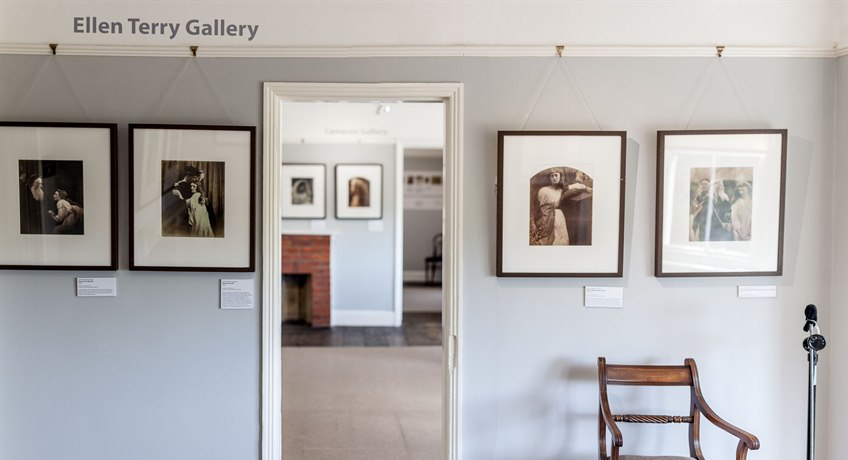
For 15 years between 1860 and 1875, Dimbola Lodge was home to Julia Margeret Cameron, one of the most important and innovative photographers of the 19th Century. A Victorian portrait photographer, Julia had close links to what is now the V&A Museum, with her first exhibition held there in 1865.
The lodge was once two adjacent properties in Freshwater Bay, with the Cameron family building a central tower between to form their new home. The lodge was named Dimbola after the tea and coffee plantations the family owned in Dimbula, Sri Lanka.
Julia was 48 when she was gifted her first camera, and set about turning an “old glazed fowl house” at Dimbola into a studio and used the coal store as a dark room. She started photographing everyone, her first successful photograph being a portrait of Annie Philpot, the daughter of a family staying on the Island close to Julia’s home. Julia started photographed many people in her life, her own children, friends, her maids and eventually her famous friends. During her career, Julia shot portraits of prolific artists and scientists of the era, such as Charles Darwin, Henry Taylor, Sir John Herschel and Sir Alfred Lord Tennyson.
Lord Tennyson was one of Julia’s earliest celebrity portraits, being one of the most famous writers in England at the time. He was also a close friend of Julia’s and a neighbour in Freshwater. Another prominent portrait was that of naturalist Charles Darwin, who rented a cottage on the Island from the Camerons in the summer of 1868.
Today at Dimbola, much of the original house is preserved. You’ll find gothic carvings, original William Morris wallpaper and interiors, the original stairway as designed by the family, Victorian glass and a recreation of Julia’s bedroom.
Housed in the central tower built by Julia, you’ll find the Tower Gallery which provides a walk through her life and work. You’ll also find an exhibition of Julia’s celebrated photographs and one of her cameras which is over 100 years old. There’s a room for dressing up in Victorian costume and information about how Dimbola was saved by the Julia Margaret Cameron Trust.
Dimbola also serves as a tearoom and exhibition space for the Isle of Wight Festival, the original event taking place at Afton. You’ll also find a life size bronze statue of Jimi Hendrix, which commemorates his last UK performance at the Isle of Wight Festival in 1970.
Mottistone Manor Farm House
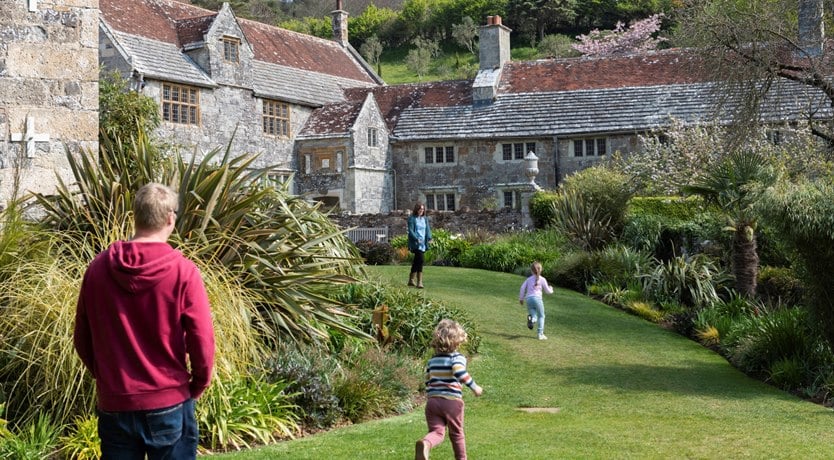
Nestled in a natural hollow beneath the downs, there has been some form of dwelling at Mottistone for over 100 years. Today sits the wonderfully maintained Mottistone Manor Farm House, complete with well-tended courtyard gardens and surrounded by sprawling downs and countryside.
The building was first mentioned in the Doomsday Book in 1086, with the modern generation of the manor we see today created in the 15th and 16th centuries. Mottistone Manor has had mixed fortunes over the years and several owners have put their own stamp on the property, including a chapel built in the grounds, an east wing being added, and improvements and remodelling of the house in a Tudor style.
In 1703, the back of the manor house was engulfed by a mud slide off the side of the downs and remained buried up to roof level for over 150 years. From there it became a farmhouse owned by the Leigh family from Shorwell.
In 1861 a well-known Island family bought the manor, the Seelys. Charles Seely was born into modest means, but by the time of his death in 1887 he owned most of the West Wight and set up the County Library Service, a local school, and the Lifeboat Station. The Seely family have since inhabited the Manor for more than 100 years.
In 1926, Charles’ son, General Jack Seely, moved from the family’s grand home at Brooke House into Mottistone and commissioned his own architect son John to transform the house from the working farm it had become, to the rural manor it once was.
After the outbreak of the First World War, General Seely was sent to the western front with his trusty horse Warrior, who was bred at the Seely’s Brook home. Despite 8 million horses and falling casualty to the war, Warrior survived some of the worst battles on the front line and they returned together to Mottistone Manor Farm House.
General Seely was often seen exercising Warrior across the downs surrounding the house and the 6-mile circular route is now known as “The Warrior Trail”. Mottistone Manor was home to both Jack and Warrior until Warrior passed in 1941 and Jack in 1947 – General Seely’s ashes and memorial can be found in the Manor’s chapel. Today a bronze statue of the pair stands in the manor gardens, with Warrior awarded the Victoria Cross in 2014 for his bravery during the war.
The beautiful gardens at Mottistone Manor were designed by Lady Vivien Nicholson in 1960, inspired by her Sicilian upbringing and creating a beautiful mediterranean terrace and lines of flowering and fruiting trees. These gardens are open to the public to visit.
Today Mottistone Manor is cared for by The National Trust, left to the organisation in 1963 by John Seely, 2nd Lord Mottistone.
Carisbrooke Castle
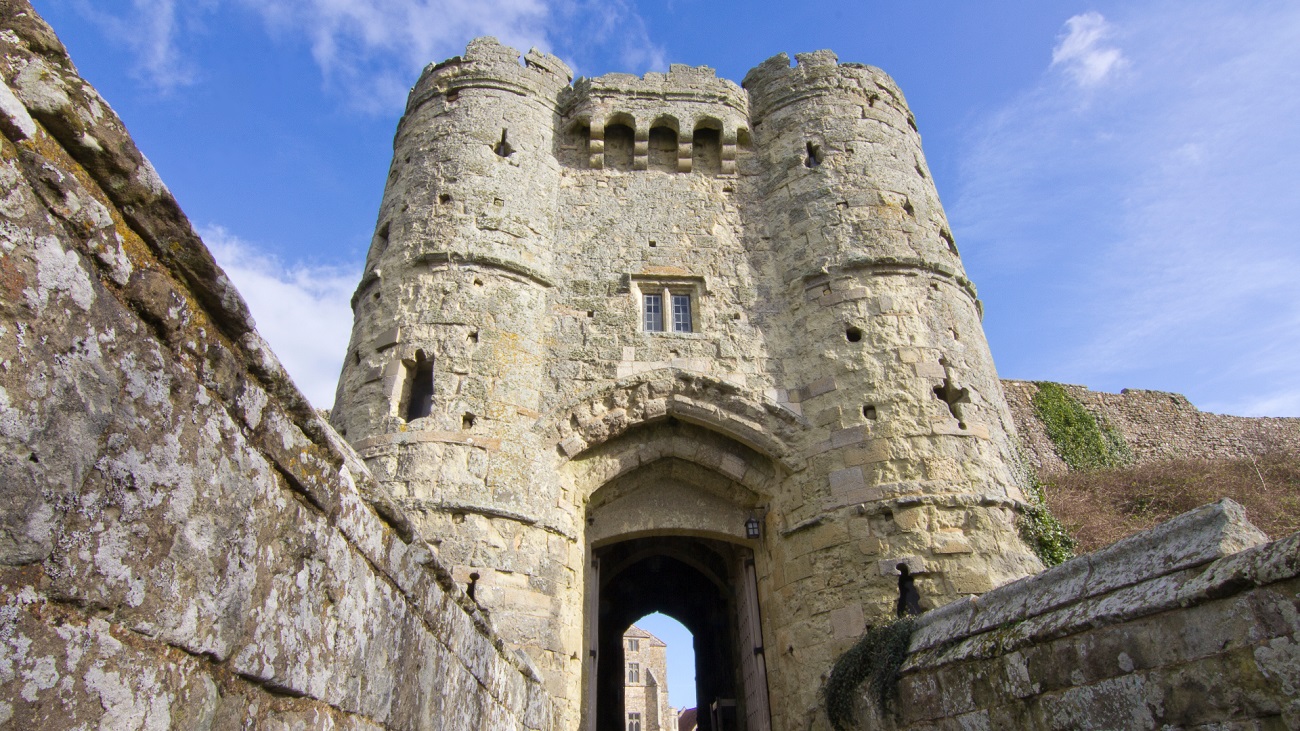
The castle has been a central place of power and defence on the Island for over 1000 years. It has been a Saxon Fortress, a castle of the Norman conquest, the castle being remodelled during the Middle Ages and once again under Elizabeth I.
Formerly the residence of the Governor of the Isle of Wight, Carisbooke Castle is most famous for Charles I being held prisoner shortly before his execution. When the First Civil War ended in 1646, King Charles I and the royalist cause were defeated and from 13th November 1647, Charles was held prisoner at Carisbrooke Castle for just over a year. While he was in custody, Charles initially still had some freedom of movement within politics. From the castle he took part in several negotiations with English and Scottish Parliament and tried to escape numerous times.
First held in custody at Hampton Court, the King slipped through the lax security and escaped to the Place House in Titchfield, the home of the fourth Earl of Southampton. His companions travelled across to the Isle of Wight and brought back with them Colonel Robert Hammond, Governor of the Island. It’s thought the Colonel was sympathetic to the King and offered the castle as refuge, however troubled by such an important charge, he wrote to Parliament to inform his superiors of the King’s presence, and Charles once again found himself a prisoner.
In January 1648 there was a small uprising in favour of the King in Newport, which led to Charles’ freedom being curtailed even further and he was confined to the castle with no private visits or communications, his staff were reduced to 30 and he was more closely watched. There were some changes made to the historic castle while Charles was in residence, like a bowling green laid out for his use, the removal of the floor to heighten the room and small castle windows replaced with large ones to let in light.
Charles I attempted to escape the castle twice with help from local sympathisers, but was unsuccessful. He was eventually executed in 1649.
Aside from the King, one of the most important castle residents was Countess Isabella De Fortibus, a great heiress and noble woman of the 13th century. Isabella was the daughter of the Earl of Devon and married off to William De Fortibus, Earl of Amule, at 11 or 12 years old. By the time her husband died, Isabella was just 23, a widow with four sons and two daughters. At 26 years old, Isabella inherited her husband’s title and land, and that of her childless brother too – this included Lordship of the Isle of Wight, as well as Devon and Hampshire. She was a great landowner of her time.
She made Carisbrooke Castle her primary residence, transforming it into a home befitting of her wealth and prestige. Much of the castle we see today was the work of Isabella, the defences, the interior and courtyard buildings – she altered most existing buildings and built new.
As a rich window, Isabella was not short of suiters, but widowhood had bought with it a degree of legal authority and financial security denied to most young women. She strenuously resisted advances from men to the point Simon de Montfort acquired the right to marry her from the King and tried to abduct her, which forced her into hiding. By 1268 Henry III granted permission for his own son Edmund to marry her, but instead she evaded him and in 1269 he married Isabella’s daughter instead.
Isabella lived for 33 years as a widow, in charge of the Isle of Wight, as well as her own land and property. She outlived all six of her own children. Her last heir to all of her wealth and land died in 1274, and King Edward I made it his mission to take over her land. His reign was dedicated to increasing his land holdings and taking her ownership of the Isle of Wight. However, she stood firm against the King. In 1281 she even triumphed against Edward when he challenged her control of the Isle of Wight in court.
On her deathbed in 1293, Edward sent his men to confirm the sale of the Isle of Wight and Isabella’s other land to the King. The death of one of the richest and most powerful women of her day saw Isabella’s land finally passed to the Crown and the Island’s independence from the royal court ended. Isabella was a powerful woman who was mistress of her own destiny and the Isle of Wight until the very end.
In 1896 Queen Victoria’s daughter, Princess Beatrice was appointed Governor of the Isle of Wight, in succession of her late husband, Prince Henry of Battenburg. With a new royal interest in the castle, architect and Island historian Percy Stone set about restoring the gatehouse, roof and the upper floor of the castle, and in 1898 opened an Isle of Wight Museum in memory of Prince Henry. In 1904 he restored the Chapel of St Nicholas, later serving as the Island’s war memorial for the 2,000 local men who perished in World War I & II.
In 1913, Prince Beatrice had the hall range and Constables Lodge adapted and modernised to become her summer residence, which she continued to use until 1938 – the last known resident at the castle.
Today Carisbrooke Castle is open to visitors, with exhibitions, museums, original rooms and features, and battlements to explore.
For more Island inspiration, see our Explore section.
Find Ways To Save.
Book your ferry travel to the Isle of Wight today!




